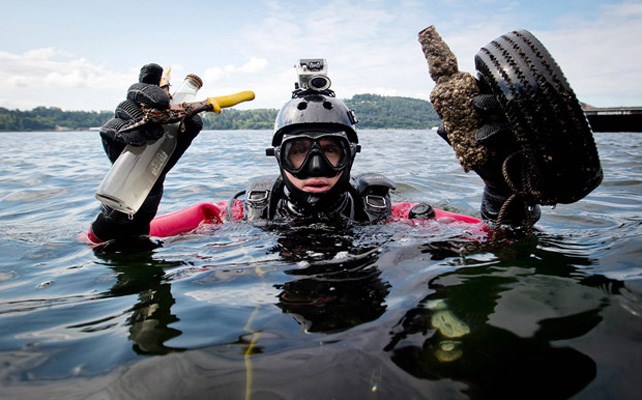Imagine if the entire length of highway between Vancouver, B.C. and Thunder Bay, Ont. was littered with debris - such as cigarette butts, plastic bags and food containers. That stretch of highway is the approximate length of shoreline (a little over 3,000 km) that was cleaned during the 2012 Great Canadian Shoreline Cleanup, a joint collaboration between the Vancouver Aquarium and WWF, and the largest direct-action public conservation effort in the country.
It's a lot of litter (over 136,000 kilograms worth), but it doesn't even come close to encompassing the total amount of litter that still plagues Canada's shorelines and negatively impacts surrounding communities and wildlife. That's why this year, even more volunteers and site coordinators are needed to battle shoreline litter, a major environmental issue.
"No matter what form it comes in, shoreline litter and pollution puts ecosystems, wildlife and people at risk," said Jill Dwyer, program manager for the Great Canadian Shoreline Cleanup. "This litter can negatively impact water quality through contamination, as well as the health of plants and animals that live in that ecosystem."
The results of shoreline litter are far-reaching:
- Shoreline litter poses danger for people and causes economic damage to areas that rely on tourism or water-based industries, like fishing.
- Local wildlife run the risk of getting tangled in or ingesting litter or other pollutants.
- Organisms often attach to litter as it flows through water systems, causing invasive species to infiltrate foreign habitats and damage the sensitive balance of the ecosystem.
- Wildlife entangled in litter such as plastic bags, six-pack rings, ribbon, fishing line or food wrappers can have their movements restricted, be injured or even eventually drown, suffocate or starve.
- Animals like sea turtles often mistake plastic bags for jellyfish and swallow them. This clogs their digestive tracts, leading to starvation and death.
- Water quality is affected by the toxins emitted from litter.
The good news is that you can be part of the solution to keep our shorelines healthy for your community and wildlife. During last year's cleanup effort, more than 136,036 kg of shoreline litter was collected from B.C.'s shorelines - the approximate weight of 27 Steller sea lions.
This fall, the national cleanup effort will take place from Sept. 21 to 29. Online registration opens in May at ShorelineCleanup.ca, or sign up by emailing [email protected].



